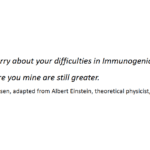
A century ago, farmers realized that optimizing crop growth was more efficient when they considered the interactions between the 3 main factors: hours of sunlight, temperature & growth medium, compared to investigating them one at a time. Soon this practice attracted the attention of Ronald Fisher, who described the statistical basis in his innovative books: The Arrangement of Field Experiments (1926) and The Design of Experiments (1935).
Since then, the DoE has come a long way. A decade ago, it entered the field of bioprocessing and has been a rising star ever since.
Working with my clients and teaching DoE as part of my Bioanalytical courses with Informa (LINK?), I realized that very few companies have a default DoE approach to bioanalytical development, validation and monitoring. Only a few selected companies I know have dedicated DoE trained people who can get the full benefit of the software they work with. A lot of other companies have the software but have not implemented it into their workflows.
DoE can support bioanalytical work and increase efficacy and robustness; meaning faster turnover of development and validation times and optimized and robust assays.
During development you can use fractional factorial designs to screen and identify the major factors influencing your assay’s performance.
Whereas during optimization you can zoom into those factors and define the most optimal conditions by modelling (lowest prediction error).
This will then feed into your Design Space, enabling you to operate your assay under the best possible conditions and thus assuring assay quality throughout its life cycle.
You can also use DoE to troubleshoot a validated assay and bring it back on track.
There are many software’s available, and whether you use JMP, Minitab, SPSS or any other, make sure you get a proper training to be able to utilize the full functionality of these programs and get the best out of it.
I predict that DoE/Design Space and the concept of Quality by Design will take over the bioanalytical world as well and in 10 years from now we cannot even imagine anymore how we did assay development without it.

